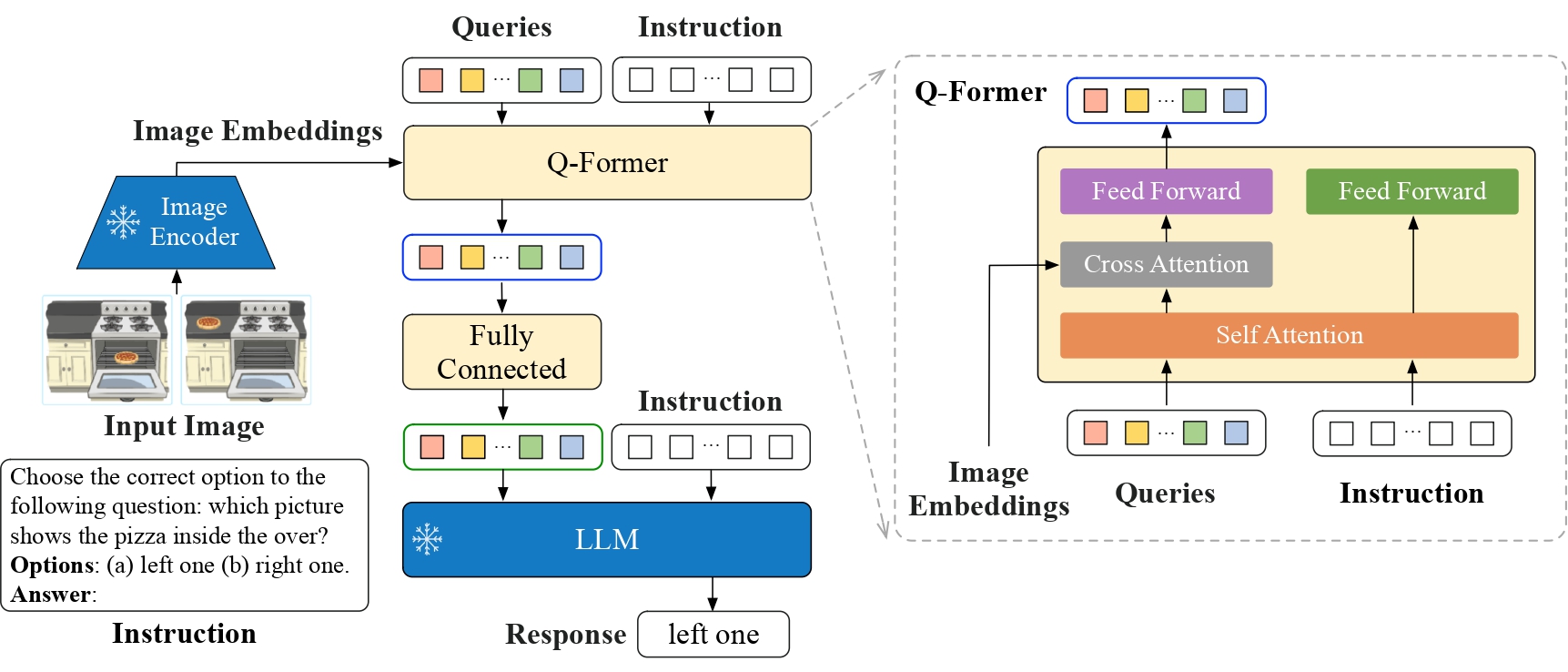🚀 InstructBLIP model
The InstructBLIP model uses Flan - T5-xl as its language model, aiming to address vision - language tasks.
🚀 Quick Start
The InstructBLIP model is a remarkable advancement in the field of vision - language processing. It utilizes Flan - T5-xl as its language model, offering powerful capabilities for various vision - related tasks.
✨ Features
- Based on BLIP - 2: InstructBLIP is a visual instruction tuned version of [BLIP - 2](https://huggingface.co/docs/transformers/main/model_doc/blip - 2), which enhances its performance in vision - language tasks.
- Research - Oriented: This release is mainly for research purposes to support an academic paper.
📚 Documentation
Model description
InstructBLIP is a visual instruction tuned version of [BLIP - 2](https://huggingface.co/docs/transformers/main/model_doc/blip - 2). For detailed information, please refer to the paper InstructBLIP: Towards General - purpose Vision - Language Models with Instruction Tuning by Dai et al.

Intended uses & limitations
The usage example is as follows:
from transformers import InstructBlipProcessor, InstructBlipForConditionalGeneration
import torch
from PIL import Image
import requests
model = InstructBlipForConditionalGeneration.from_pretrained("Salesforce/instructblip-flan-t5-xl")
processor = InstructBlipProcessor.from_pretrained("Salesforce/instructblip-flan-t5-xl")
device = "cuda" if torch.cuda.is_available() else "cpu"
model.to(device)
url = "https://raw.githubusercontent.com/salesforce/LAVIS/main/docs/_static/Confusing-Pictures.jpg"
image = Image.open(requests.get(url, stream=True).raw).convert("RGB")
prompt = "What is unusual about this image?"
inputs = processor(images=image, text=prompt, return_tensors="pt").to(device)
outputs = model.generate(
**inputs,
do_sample=False,
num_beams=5,
max_length=256,
min_length=1,
top_p=0.9,
repetition_penalty=1.5,
length_penalty=1.0,
temperature=1,
)
generated_text = processor.batch_decode(outputs, skip_special_tokens=True)[0].strip()
print(generated_text)
How to use
For more code examples, please refer to the documentation.
Ethical Considerations
This release is for research purposes only in support of an academic paper. Our models, datasets, and code are not specifically designed or evaluated for all downstream purposes. We strongly recommend users evaluate and address potential concerns related to accuracy, safety, and fairness before deploying this model. We encourage users to consider the common limitations of AI, comply with applicable laws, and leverage best practices when selecting use cases, particularly for high - risk scenarios where errors or misuse could significantly impact people’s lives, rights, or safety. For further guidance on use cases, refer to our AUP and AI AUP.
📄 License
This model is released under the MIT license.

